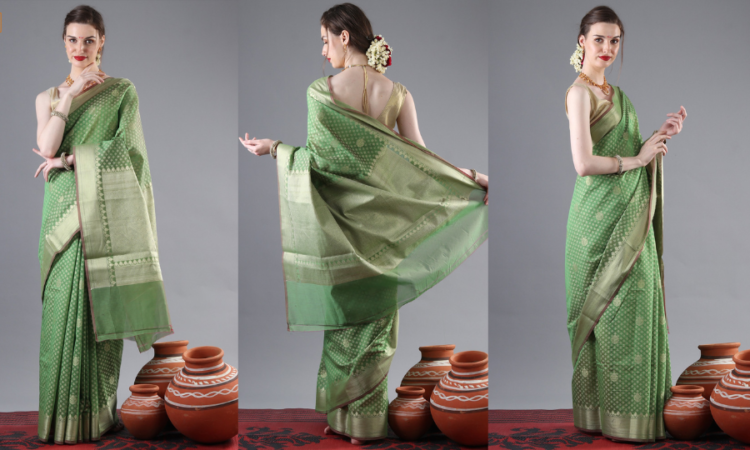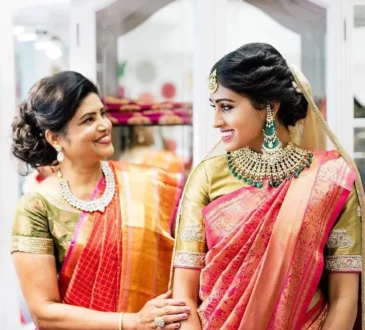
Introduction
In the tapestry of India’s textile heritage, the Chanderi saree is a luminous thread, weaving through centuries with unparalleled grace. This article explores the enchanting evolution of the Chanderi saree, offering insights into its meticulous craftsmanship and the fascinating process behind its creation.
A Glimpse into History
Chanderi’s legacy is not confined to its silk and cotton threads; it encompasses a cultural saga that has weathered invasions, embraced influences, and emerged stronger. The Chanderi saree, once a symbol of royal decadence, has evolved into a cultural emblem, connecting the past with the present.
- The Artisan’s Canvas
At the heart of Chanderi’s allure lies the dedicated hands of skilled artisans. These craftsmen, often carrying the torch of family traditions, infuse life into each warp and weft. The result is not just a saree; it’s a manifestation of artistic lineage and a testament to the timeless beauty of handwoven craftsmanship.
- The Fabric Chronicles: Silk, Cotton, and Zari
Delving deeper into the fabric, the silk variant of Chanderi is a treasure trove of luxury. It’s natural sheen and lightweight texture make it an embodiment of sophistication. On the other hand, cotton Chanderi, with its breathable weave, finds favor in everyday wear, offering comfort without compromising on style. The interplay of zari threads adds a celestial touch, elevating the Chanderi saree to a garment fit for royalty.
- The Magic of Motifs
Chanderi sarees are not mere ensembles; they are canvases adorned with tales. The choice of motifs speaks volumes about the wearer’s personality and cultural roots. Beyond the peacock motifs and buti work, Chanderi embraces a plethora of designs. From delicate florals to abstract geometrics, each motif is a brushstroke in the larger canvas of Chanderi artistry.
- The Weaving Process Unveiled
To truly appreciate a Chanderi saree, understanding the weaving process is paramount. The rhythmic clatter of the loom, the meticulous interlacing of threads – these are not just steps; they are rituals. The handloom process, a slow dance of craftsmanship, gives birth to a fabric that not only adorns but also narrates a story of patience and dedication.
- Chanderi Saree in Contemporary Fashion
In the 21st century, where fashion is a dynamic dialogue between tradition and modernity, Chanderi sarees find themselves at the intersection. Renowned designers are not merely adapting Chanderi; they are reinventing it. The runway becomes a stage where tradition meets trend, and Chanderi emerges not just as a garment but as a symbol of sartorial fusion.
- Preserving Heritage: Challenges and Triumphs
The journey of the Chanderi saree has not been without obstacles. The threat of mechanization and the allure of mass production have loomed large. Yet, the resilience of the Chanderi weaving community, coupled with initiatives promoting sustainable practices, has been a triumph. Today, every Chanderi saree is a triumph over time, preserving tradition while embracing the future.
- Where Tradition Meets Trend: Chanderi in the Global Market
Chanderi sarees are not just confined to the soil of India. They traverse borders, becoming ambassadors of Indian culture. The global stage welcomes the allure of Chanderi, with enthusiasts worldwide seeking the charm of handcrafted elegance. The global acceptance of Chanderi is not just a testament to its aesthetic appeal; it’s a recognition of India’s rich heritage.
The Allure of Chanderi: A Timeless Elegance
In conclusion, the evolution of the Chanderi saree is a journey through time, culture, and craftsmanship. Each thread tells a story, each motif weaves a chapter, and each Chanderi saree is a living testament to the artistic finesse of generations. Embracing a Chanderi saree is not just donning attire; it’s a celebration of tradition, a nod to craftsmanship, and an eternal embrace of elegance that transcends time and trends.




